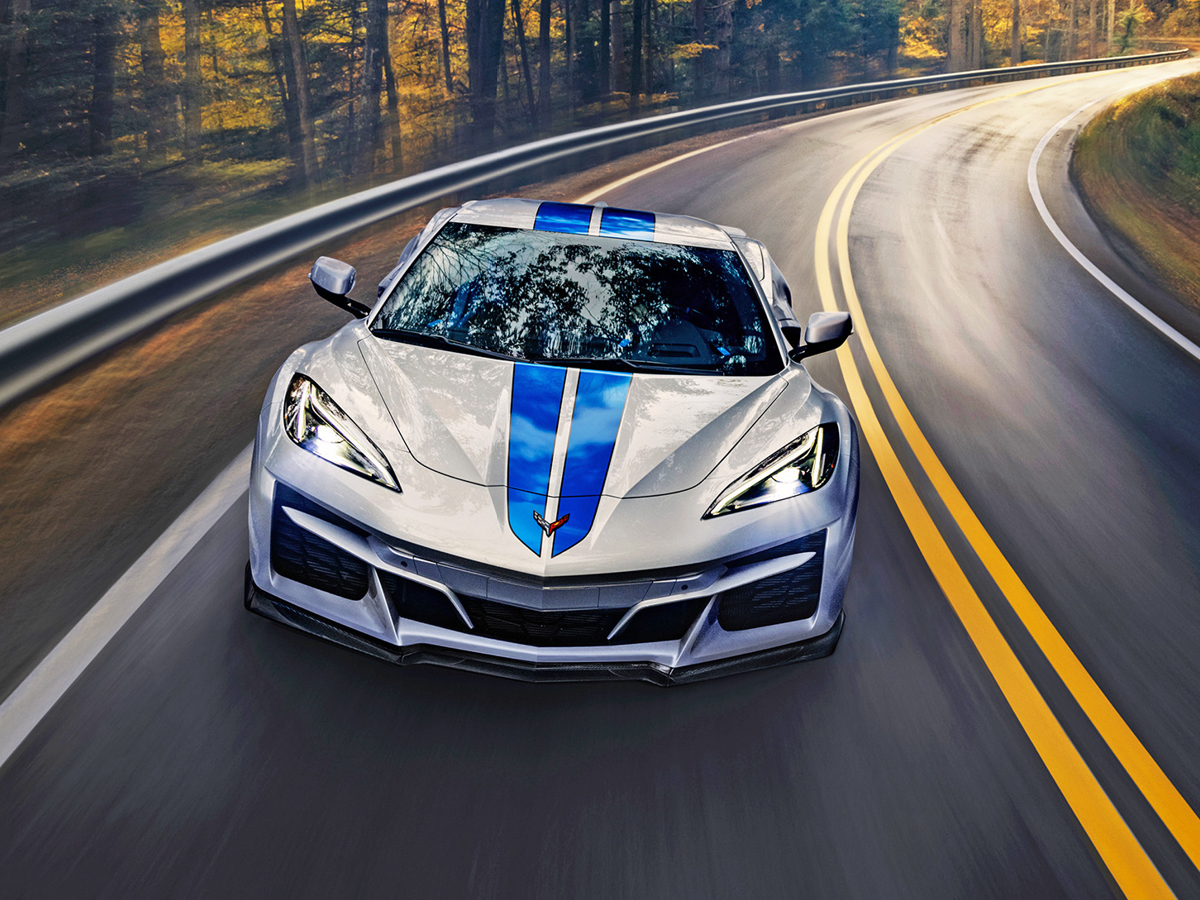Meet the First Electrified Vette
It’s not difficult to see the semi-sad irony in the Chevrolet Corvette finally becoming a mid-engine car in 2020 more than half a century after one was first promised and shown as a prototype. The new Sting Ray also came right as the industry announced sweeping investments in a transition to EVs.
Good news: The Corvette isn’t going anywhere. It will just come in different flavors. While a full EV Corvette is on schedule for next year, the good old internal combustion engine models will remain with us for a while. The current Corvette Z06 is the peak of ICE performance in this 70-year model series and in high demand.
In the meantime, Chevy is now also combining these two powertrain worlds into one spectacular hybrid: the 2024 Corvette E-Ray with 655 horsepower and all-wheel drive. Deliveries should begin in October, with pricing starting at $104,495 for the coupe with lift-off roof panel, or a full convertible for $111,495.
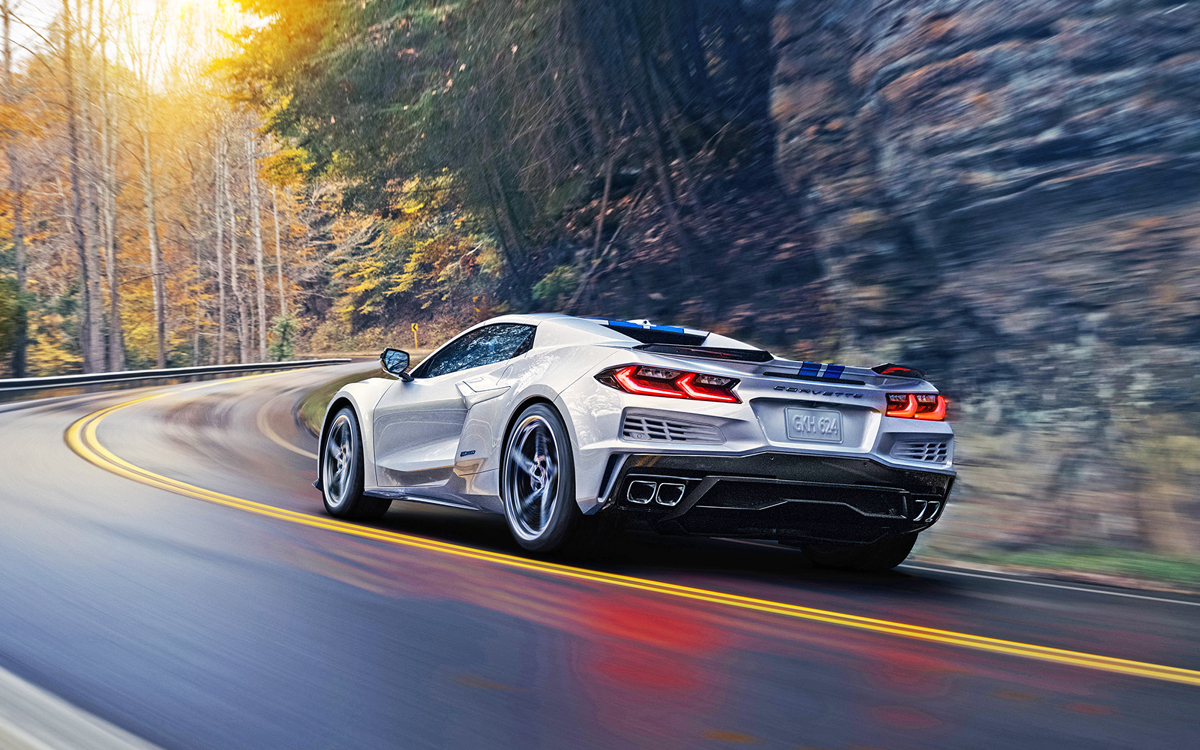
Mid-Engine Promises
Ever since the new mid-engine Corvette’s arrival, the grapevine has been buzzing in anticipation of a 1,000-horsepower hyper-Vette model called the Zora, after Corvette’s first chief engineer, Zora Arkus-Duntov, who died in 1996. That is in the pipeline. The hybrid E-Ray will beat it to the showroom, though, positioned it as the ultimate road Vette, yet with track capability.
Duntov’s vision for a mid-engine Corvette predated even the 1963 Sting Ray, but that was never going to happen while the production car was doing well and raking in profits. Mid-engine concept cars and prototypes came and went, including the striking XP-882 shown at the 1970 New York Auto Show and rumored to be the 1973 Corvette. We know how that story ended. The XP-882 was intended to introduce all-wheel drive, too. More concepts in the 1990s promised the same thing, but corporate leadership saw no reason to mess with the regular production car and its reliable revenue stream.
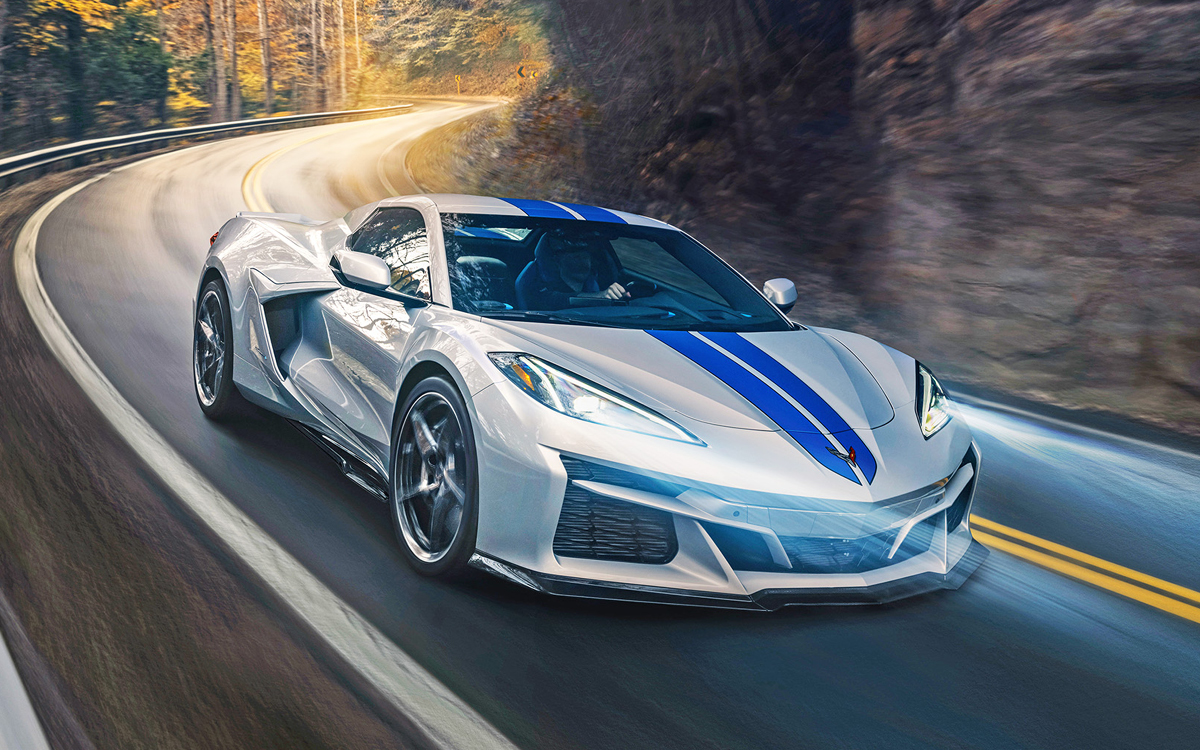
E-Ray Basics
That brings us to the E-Ray. Start with this: It appears the E-Ray will be, at least for now, the quickest-accelerating Corvette ever, and one of the world’s top-accelerating automobiles. This hybrid combines output of the standard Sting Ray’s naturally aspirated 495-hp V-8 driving the rear wheels via 8-speed dual-clutch transaxle. Up front, a single 160-hp electric motor powers the front wheels.
That combination can get the E-Ray from 0-60 in 2.5 seconds and through the quarter mile in 10.5 seconds, according to Chevy. According to road tests, the standard Sting Ray gets 0-60 done in 2.8, so we’d guesstimate that the E-Ray may be even quicker than projected. Top speed should be north of 200.
Chevy developed the mid-engine Corvette with the E-Ray as part of the plan from the start, so the hybrid components are neatly integrated into the package. The Z06 donated its wide-body design and Magnetic Selective Ride Control damper suspension. (Ferrari uses the same suspension technology, calling it MagneRide, originally developed by GM.)
Staggered 20- and 21-inch wheels with Michelin Pilot Sport all-season tires come standard for the E-Ray, as do ceramic composite brakes. Michelin Pilot Sport 4S summer tires are included with an optional performance package.
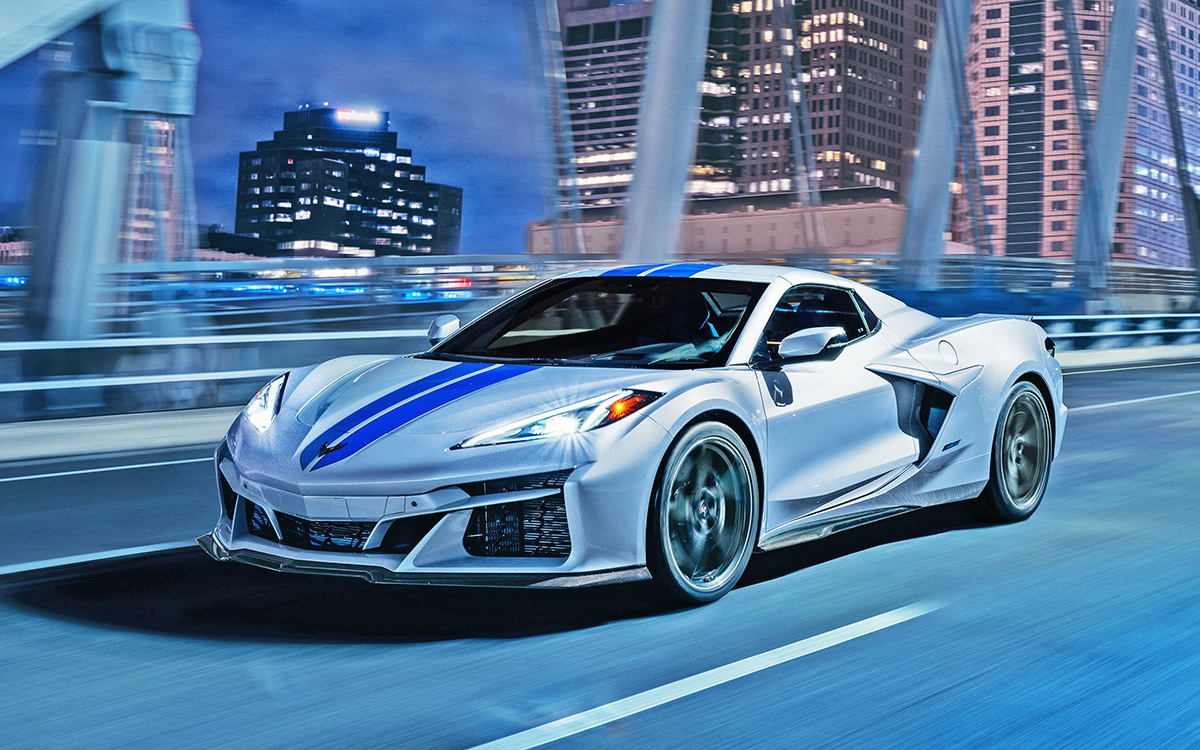
Corvette as Snowmobile
While the E-Ray will claim the (probably temporary) mantle as the quickest street-oriented Corvette, its main mission is to deliver a significant leap in overall performance over the already formidable Sting Ray. That’s part one. Part two is the e-AWD system that engages the electrically powered front wheels to enhance traction for better acceleration grip on dry or slippery pavement.
You might not buy an E-ray for honing in the snow, but it’s nice to know you might not have to white-knuckle a drive home through a surprise snowfall. And just think of what a set of proper winter tires might do.
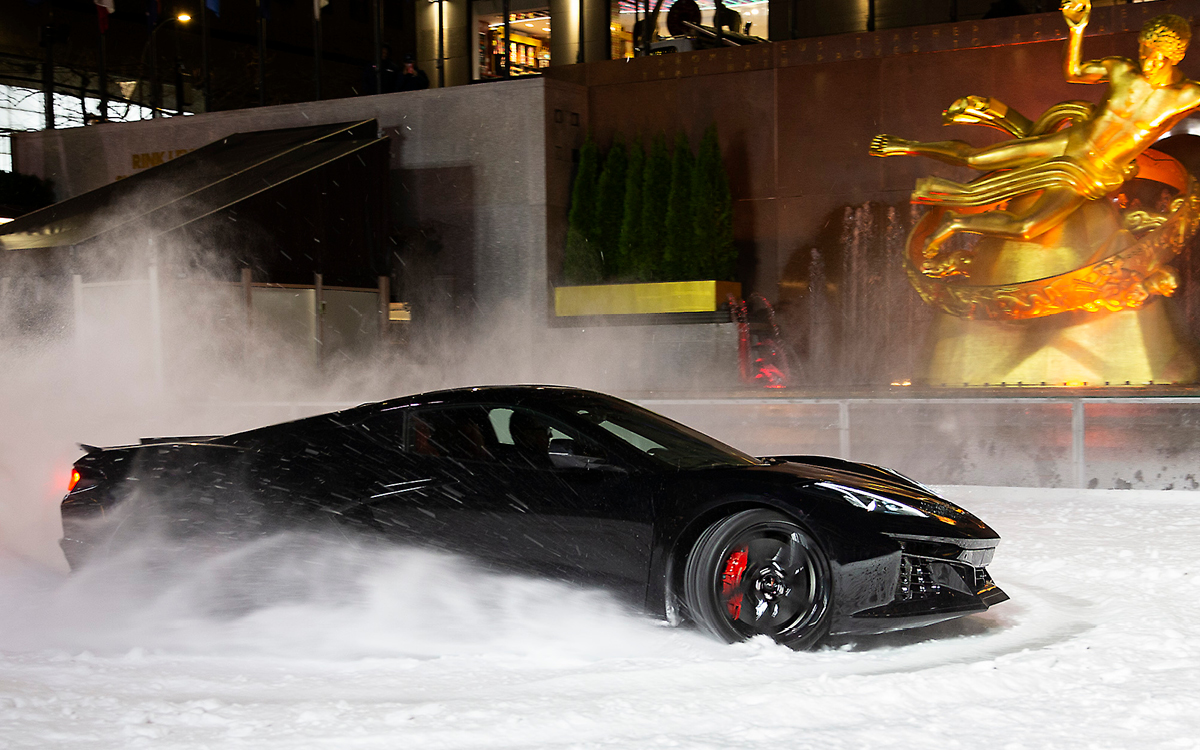
Value King
Just as the current Corvette Sting Ray drew comparisons to more expensive exotics, the E-Ray will likely be mentioned in the same sentence as hybrid supercars, including the McLaren Artura and Ferrari 296 GTB. In terms of “bang for the buck,” the E-Ray will be the champ. Yet, those going for the Europeans are not necessarily looking for bang for the buck, so the comparisons are more for entertainment purposes. Here are some fast facts:
The Corvette E-Ray is a pure hybrid, which kept cost and weight down versus building a plug-in hybrid like the McLaren and Ferrari. The E-Ray’s 1.9-kWh lithium-ion battery is charged only by regenerative energy from coasting and braking, as well as during normal driving. Chevy says the E-Ray will allow very short bursts to 45 mph on the battery alone, but with no appreciable electric-only range.
The McLaren Artura and Ferrari 296 plug-in hybrids offer some battery-only driving range. On a full charge, the Artura can reach a claimed 81 mph on battery alone or go about 19 miles at lower speeds, and the 296 GTB is similar. Also, both the Artura and Ferrari 296 models both use twin-turbo V6s, while the E-Ray has a naturally aspirated V8 heart, so it still sounds like a Corvette.
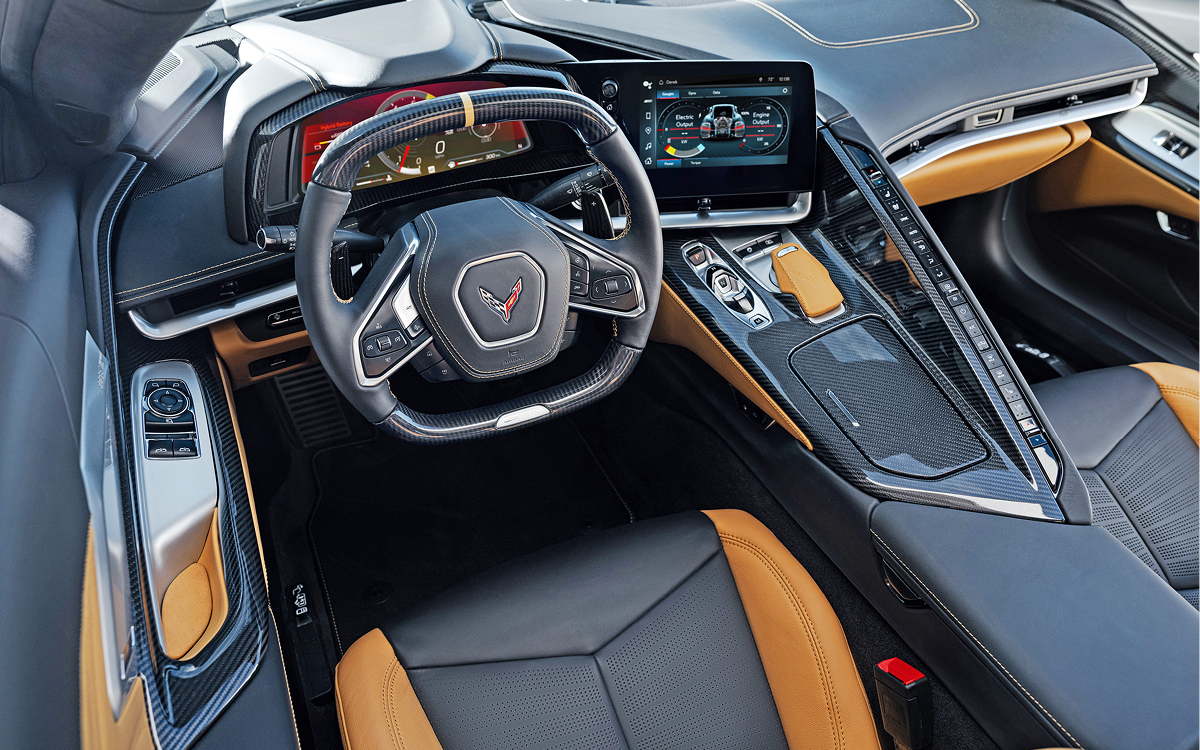
But Wait, There’s More…
The real reason for offering EV-only range in those Euro exotics is so owners can drive in parts of European cities that restrict ICE vehicles now, and in the future. We’ll have to wait for road tests to confirm, but based on power and weight, the E-Ray will likely match or slightly beat the Artura in acceleration. The Ferrari, with a staggering 818 total system horsepower, should be quicker than both, at least around a road course.
Then there’s pricing. The Artura starts at around $238,000 (or two E-Rays and change). The Ferrari 296GTB/GTS starts at $343K or three E-Ray convertibles. The Artura is available only as a coupe; the Ferrari as coupe and convertible.
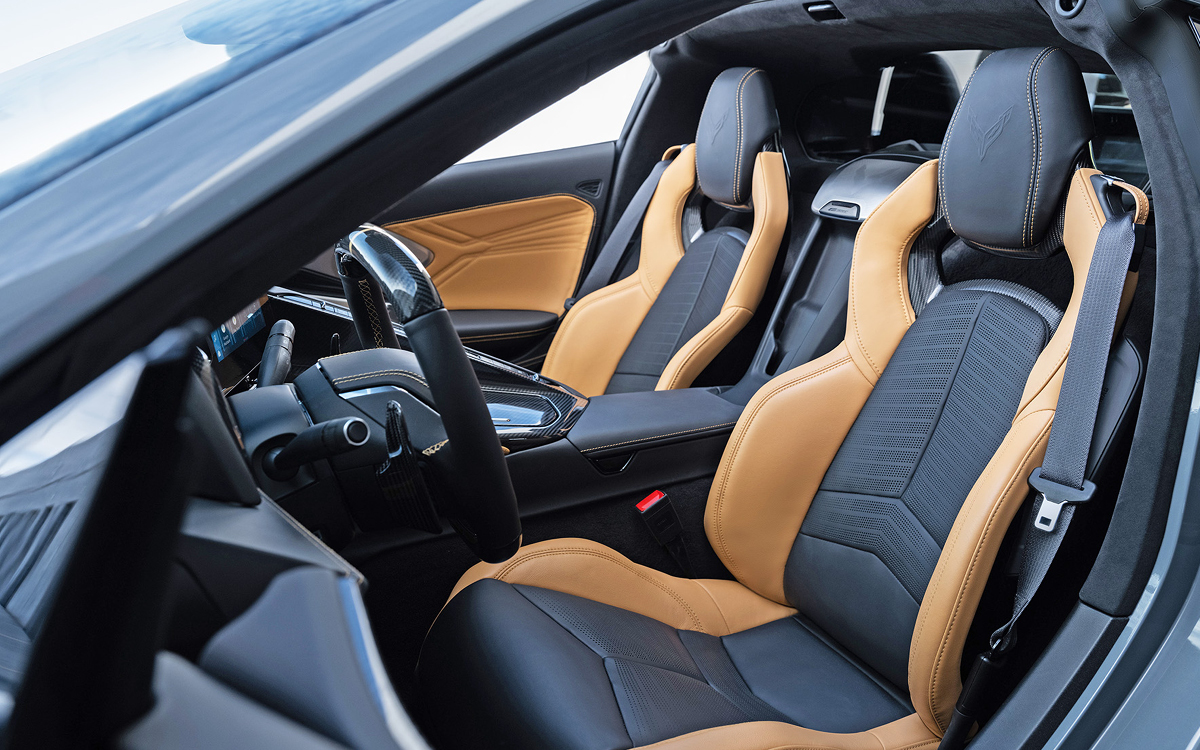
Sparks Will Fly
Chevy has identified a sea of opportunity for super-Vettes in the $100,000-$200,000 space, where no exotics currently play. On the ICE side, we’ll soon see a twin-turbo, 800-hp ZR-1 track model. Combining that with the E-Ray’s front electric motor will yield the long-rumored 1,000-hp Zora ultimate track model. Into that mix, Chevy will slip a pure electric Corvette. It sounds like a plan for domination, automotive edition.

